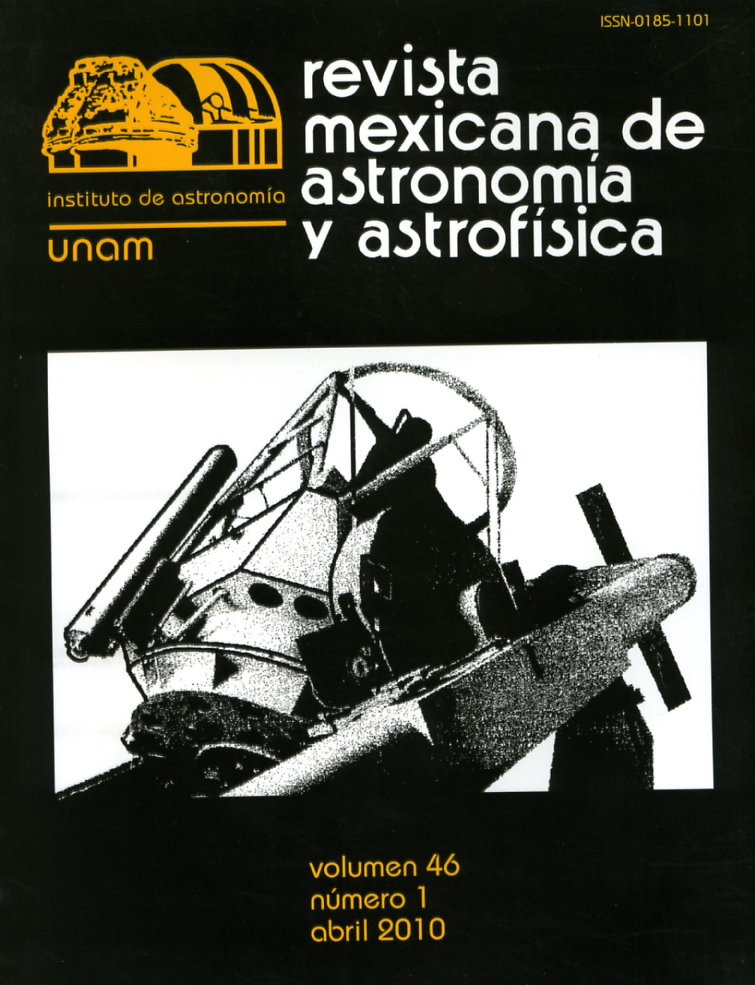Photoevaporation of a binary proplyd system
Main Article Content
Abstract
We present 3D numerical simulations of photo-evaporation of a binary accretion disk system inside an H II region. The simulations take into account farand extreme-ultraviolet (FUV and EUV) radiation from a stellar source. We study both FUV dominated and EUV dominated models. FUV dominated models show a well defined interproplyd shell in both Hα emission and density maps, when the separation of the binary system is relatively large (~ 2 000 AU). For smaller separations (~ 200 AU), the interproplyd shell no longer develops. We show that an EUV model with a suitable choice of parameters increases the H emission of the interproplyd shell relative to the emission of the ionization fronts, in better agreement with the observations of the binary proplyd LV1.
Article Details
How to Cite
Vasconcelos, M. J. (2016). Photoevaporation of a binary proplyd system. Revista Mexicana De Astronomía Y Astrofísica, 46(1). Retrieved from https://www.revistas.unam.mx/index.php/revmexaa/article/view/23615
